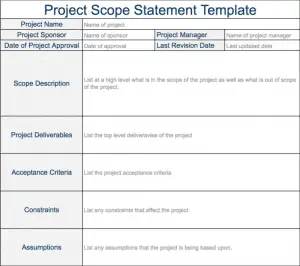When managing projects you will need to interact with all kinds of different people. Broadly speaking these people that you will interact with fall into different roles. These key roles that you’ll need to interact with and communicate with are described below.
Project Sponsor
Sometimes know as the customer or executive sponsor, the project sponsor is the person with ultimate authority and responsibility for the project. They will provide authorization for the project to start, they will approve any changes to scope along the way, and they will approve the deliverables at the end of the project.
A project’s sponsor will typically have a vested interest in the outcome of the project. In a business context they will typically be the person with profit and loss responsibility for an area, or the person who is supplying the most people to deliver the project.
Steering Committee
Also known as a project board, a steering committee consists of the project sponsor plus other key individuals who need oversight of your project. The role of the steering committee is to provide direction to the project and to support the project manager.
These key individuals can be a variety of people, but are typically heads of key departments involved either in working on the project, or involved in using the eventual deliverables that the project will produce.

A steering committee is a great way to get help with your project or gain clarity on areas that are of concern. It is important to note that a steering committee is not a democracy where each member has one vote, as a range of different vested interests which don’t necessarily align will be represented. For this reason, the project sponsor will usually chair the steering committee, as they are in the best position to serve the interests of both the project and the organization.
People are busy, and so your steering committee will be a diverse group of busy people, so it is a good idea to set up regular steering committee meetings in advance, at the beginning of your project, so everyone can clear their calendar to attend.
There are two other reasons why you’d want to gather the steering committee together. Firstly, when something exceptional happens that negatively impacts the project, and secondly, when you need to make decisions at key governance points in the project.
Stakeholders
A project stakeholder is an individual, a group, or an organization, that may affect or be affected by your project in some way. They may be affected by the work of the project or they may be affected by the outcome of the project.
As project manager it is important for you to manage stakeholders in such a way as to create constructive and positive relationships so that they are on your side. The Stakeholder Management Process is a key tool of the project manager to ensure the expectations of stakeholders are appropriately managed.
Project Team
A project team is a team of people usually brought together from different business units for the purpose of completing a project. As project manager all the members of the project team will report to you.
Team members may or may not have sub-teams. You project team should consist of range of people with the right blend of skills and expertise such that all the different skill areas required to complete the work of the project are represented. The project team should share the common goal of completing the project to meet its objectives. Because a project team comes from different business units they can be considered to be a cross functional team.
The roles we have described so far are all mandatory, you must have them involved in your project. The roles we’re going to look at now are all optional. You don’t have to have them, but it could be beneficial if you do:
Senior User (or Client)
This person represents the interests of the end users, that is, those people who will use the deliverables in anger once they have been produced and the project disbanded. If there is more than one type of user for your deliverables you may well need to have more than one senior user.
In a situation where there are lots of different types of user of your deliverables then it often makes sense to appoint one single senior user who will coordinate the interests of all the different user types.
Quality Assurance
Within a small project the project sponsor often ensures that the project is being carried out in the agreed way. In large projects, especially where regulatory requirements exist, then there is often a person assigned to the project team whose role it is to ensure the project is being carried out in according to the agreed methodology and standards.
Summary
No project exists in a vacuum and so project managers need to interact with other people to successfully manage their projects. The key people a project manager will interact with fall into some distinct roles. The roles that all projects must involve include a project sponsor, a steering committee made up as a minimum of the project sponsor, stakeholders, and a project team. Optionally, project managers may interact with the roles of senior user and quality assurance, amongst others, for example, suppliers.
Image credit: Robert Couse-Baker










